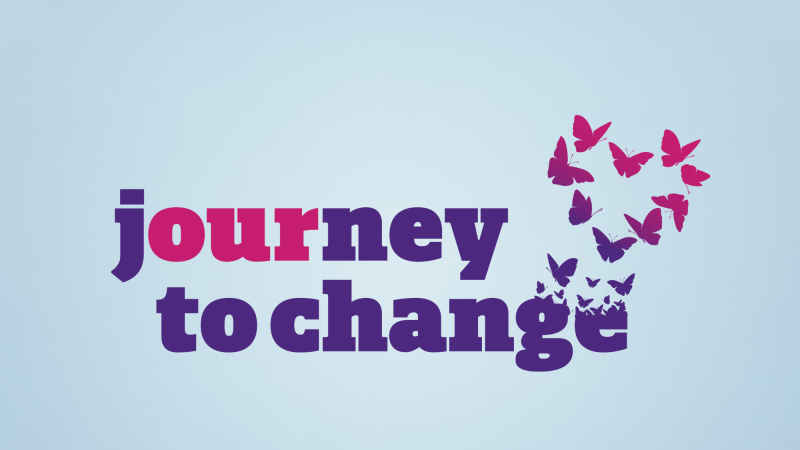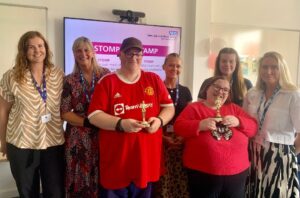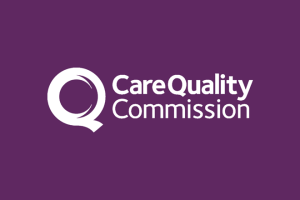On this page
Who we care for and how we do it
We are the mental health and learning disability NHS foundation trust for County Durham and Darlington, Teesside, North Yorkshire and York.
At Tees Esk and Wear Valleys NHS Foundation Trust (TEWV) we serve a population of two million people and are geographically one of the largest NHS foundation trusts in England. We have almost 8,500 staff and an annual income of more than £550 million.
Safe, understood and cared for
Our talented and compassionate teams work with our patients and partners and in the community. We help the people of our region feel safe, understood, believed in and cared for. We work in lots of different ways from education and prevention to crisis and specialist care.
We also provide mental health care in prisons in the North East, Cumbria and parts of Lancashire.
Our patients and carers have a say in how they are supported and treated. This is because we know how important it is to listen and treat people as individuals. We all work together towards better mental health.
What we do
We work across two care group boards – one covering Durham and Tees Valley, plus forensic services (psychiatric services in a safe, secure setting), and one for North Yorkshire, York and Selby.
We provide:
- Adult mental health services mental health services for older people
- Children and young people’s mental health services
- Learning disabilities services
- Health and justice services
- Secure inpatient services
As a foundation trust, we are accountable to local people through our council of governors. We are regulated by NHS England and the Care Quality Commission.
Our Journey to Change
Everything we do is guided by Our Journey to Change and our values. Our Journey to Change sets out where we want to be and how we’ll get there. It includes our goals that we co-created
with patients, carers, colleagues and partners. Co-creation means working together.
We will keep working hard to make sure our values are part of everything we do. This means everyone, in every role across our trust, shows respect and compassion and takes responsibility for the care we give.

Highlights of the year
April 2024

We were the first NHS trust to organise and stage our own running event across the North East and Yorkshire with TEWV 10k. The fun run took place at Knavesmire in York Racecourse. People of all abilities and ages were invited to take part, whether it was for fundraising or for their own goal or reason. 500 people took on the challenge by running, jogging or walking and all finishers received a medal and a goody bag.
May 2024

We celebrated at the national Positive Practice in Mental Health awards. Winners included Richard Hand general manager at Ridgeway, the Integrated Support Team at HMP Durham, the REACH Team – Scarborough, Durham and Darlington Care Home Liaison Team, and Teesside Children and Young People Community Eating Disorder Service. Our Recovery College Online, Kestrel Kite ward at Ridgeway, Employee Support Services, and the Wellbeing Unit at HMP Hull were all highly commended.
June 2024

A Teesside project, backed by our trust, about stopping the over medication of people with a learning disability or autism (STOMP), won a regional Healthwatch Star Award. The project was also a finalist in the National Learning Disability and Autism Awards. It proved life changing for Anne-Marie, who had a medication review as part of a pilot in North Stockton. She said she felt more confident, happier and could do more.
July 2024

Life came full circle for peer support worker Callum O’Keeffe after being inspired by the care he was given while struggling with his mental health as a young adult. He is now supporting others as a senior peer support worker for Durham and Darlington Rehab and Recovery team within our trust. Through his personal experiences, he helps guide people through the darkness he survived. He also plays a key role in helping to develop future treatments and services.
August 2024

Nurses from our trust featured in an exhibition at Kirkleatham Museum, Redcar. The ‘Nursing the Tees Valley’ exhibition shared memories and experiences of retired and current NHS nurses in the region. One of the nurses, Paddy Neasham, followed family tradition joining the NHS, but never thought her training would help casualties of the worst disaster in British sporting history. The senior supervisor in our mental health crisis team, witnessed the aftermath of the Hillsborough disaster while training as a nurse in a Sheffield hospital.
September 2024

Wellbeing in Mind, which plays a vital role in supporting the mental health and wellbeing of students, celebrated helping more schools than ever before. 64 schools within Hambleton and Richmond, Selby, Scarborough, Ryedale, Harrogate and York now access support from our school mental health team. The team began operating in Scarborough and Selby in September 2020 and has expanded significantly across North Yorkshire. In York alone, the team has increased its support from eight schools in 2021 to 20 in 2024.
October 2024

Our Star Awards 2024 were held at the Leonardo Hotel in Middlesbrough. The ceremony highlighted the TEWV stars who do amazing work across our trust, going the extra mile in everything they do. They included colleagues, volunteers, involvement members and partners, who were nominated across nine categories. Presented by mental health advocate Jake Mills, guests heard about each nominated person or team, the great work they did and why they were nominated, before the winners were announced.
November 2024

We officially launched an exciting new web section on our website, co-created by children and young people and their families. The new site for our child and adolescent mental health services (CAMHS) includes practical tips and advice to support children and young people’s mental health, signposting to links and self-help resources, details about local CAMHS services and other useful information. It also included video tours that were filmed and narrated by our young people.
December 2024

ARCH Recovery College celebrated 10 years of supporting local people with their mental health. Based at St Margaret’s Health Centre in Durham and run by our trust, they offer a variety of discussion-based educational courses and workshops on mental health, wellbeing and recovery, as well as outdoor activities including photography, mindfulness practices and walking groups. It has helped hundreds of people struggling with their mental health, with many students returning to help co-create and co-facilitate the courses and workshops.
January 2025

We worked with patients and carers to launch a pioneering virtual tour of our Dalesway unit at Roseberry Park Hospital in Middlesbrough. The 3D tour aimed to help ease the anxiety of patients before they visited and provided a detailed digital walkthrough of key areas including the reception, corridors, and café. Work to create the virtual visit involved high-tech cameras linked to infrared sensors and artificial intelligence to take detailed digital replicas of the site.
February 2025

The Care Quality Commission (CQC) rated our mental health crisis services and health-based places of safety ‘good’. This means we retained our previous ‘good’ rating and that our service is performing well and meeting CQC expectations. People using the service said they felt safe, and that staff were kind, compassionate and respectful. The report also highlighted that staff shared a vision and culture, worked with capable and compassionate leaders and there were sound structures in place for staff to speak up.
March 2025

More than 40,000 people in Teesside benefited from the support of a mental health practitioner at their local doctor’s surgery. Mental health practitioners were introduced as part of a programme to help improve mental health care in local communities. The practitioners help to reduce caseloads for GPs by providing support and advice to patients.
The year in numbers
- 324 job outcomes achieved for people we care for through our Individual Placement and Support Service
- 282 volunteers, with an average of 463 hours volunteered every month
- 8,344 staff
- 465 patients and carers registered for involvement work with us
- 28,203 total followers on social media
- 682,700 views on our website
- 494 nominations for our Star Awards
- 108,747 calls to the crisis line
- 93% of patients reported their recent experience as very good or good
- 21 therapy dogs
Fit for the Future
NHS 10 Year Health Plan for England
The 10 Year Health Plan for England makes use of new technologies, medicines, and innovations to provide better care for all patients. The key areas of the plan are:
- From hospital to community
- From analogue to digital
- From sickness to prevention
The plan means change for health and social care, however, our trust is already delivering on some of the ambitions.
How we’re achieving the 10 year plan
Hospital to community
- A community mental health hub in York opening 24 hours a day and seven days a week from October Compassionate, qualified and experienced staff can support anyone in distress (aged 18 plus), with no need for a referral.
- The co-creation of Darlington crisis house. A welcoming, homely alternative to hospital admission for those with acute mental health distress. It aims to reduce pressure on hospital services by helping avoid unnecessary admissions. It will offer access to mental health support, psychological care, peer support and community resources.
A welcome shift from hospital to community
“The NHS 10 Year Health Plan’s commitment to shifting care from hospitals into the community is not just a strategic ambition – it’s essential.
“Through working in partnership with our primary care networks, local authorities, voluntary care services and alcohol and drugs services, we’ve embraced our core principles – we accept each other’s referrals, we don’t refuse a referral and there is no ‘wrong door’. Our approach is simple but powerful: help people early, keep them well and connect them with the right support.”
Dr. Ranjeet Shah, group medical director, Durham Tees Valley
Analogue to digital
- To support staff training, we opened a new, state-of-the-art simulation suite at Lanchester Road Hospital, Durham. Thanks to the technology set up, rooms are equipped with real time video and sound streaming. It offers a psychologically safe place to learn that is as close to reality as possible. We hope to build more simulation rooms in other locations across our trust.
- North Yorkshire NHS Talking Therapies launched a new treatment offering mindfulness based cognitive therapy using immersive Virtual Reality (VR) headsets. ‘Tend VR’ is exclusive to North Yorkshire Talking Therapies and are the first in the country to offer the new innovative treatment.
Embracing technology for better care
“This is an exciting immersive experience, and we hope that the companion app will help people keep up with the techniques between the sessions.
“It’s easy to use even for people who aren’t particularly ‘tech savvy’.”
Louise Hughes, senior psychological wellbeing practitioner, North Yorkshire Talking Therapies
Sickness to prevention
- Neighbourhood integrated services in Stockton bring together a range of expertise and organisations under one roof. This makes it easier for people to access local help and support for a wide range of mental health and wellbeing issues
- Expansion of mental health support teams for schools in North Yorkshire and Durham Tees Valley. The teams focus on early interventions and provide an important support service to students experiencing emotional wellbeing difficulties.
Supporting more students than ever before
“It’s lovely to see you’ve made a difference. As we’ve intervened and it’s still at a low level, early intervention stage, there’s a hope that it won’t escalate.
“The child or young person or family will have developed a set of skills to support them going
forward and they hopefully won’t need to access more complex support in the future.”
Laura Campleman, education mental health practitioner based in York
Review of the Year 2024 to 2025 (PDF version) Find out how to become a member of our trust